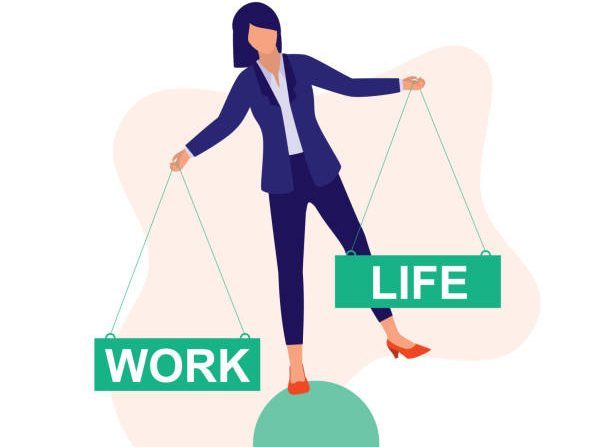Many people are concerned about work-life balance. Does information technology (IT) help or hurt? IT is a double-edged sword that offers pros and cons.
The Pros —Technology Encourages Work-Life Balance

Saves time. The use of technology can save time. I recall how my grandmother washed clothes over 60 years ago. It took most of a day using a ringer washer and then hanging the clothes on a line to dry. Now with modern appliances, clean clothes are achieved in a fraction of the time. Think of the move to online shopping, which changes the process to a few clicks on a computer or smartphone followed by delivery or pickup.
Enables remote work. Thanks to computers, internet access and collaboration software, many people work from home or in remote locations. This saves commute time and expense, reduces pollution, improves productivity and increases flexibility. Of course, employers need to agree. Our company, Radish Systems, is run virtually. This allows us to hire the best people from around the country. As the State of Colorado Chief Information Officer when the COVID-19 pandemic hit, my IT team enabled 80% of the 30,000 state employees to work remotely — in a matter of a few weeks. We found employees were less stressed and more productive while working longer hours and staying healthier.
Reduces mundane work through increased automation. With artificial intelligence (AI), more mundane, repetitive work is being automated. This is especially important when there’s a shortage of potential employees with the right digital skills. (However, increased automation may take the “spirit” out of work and leave a jobless underclass.)
The Cons —Technology Discourages Work-Life Balance
Increases stress. Many people are always plugged in and therefore always on call. Since employers know this, they may put 24/7 demands on their staff, with unrealistic response times. Rather than turn off and relax, people ‘waste’ time by surfing the internet, playing games, or mindlessly scanning social media.
Hurts social development and can be manipulative. Watch the movie The Social Dilemma and learn from the tech experts in Silicon Valley about the dangerous impact of social networking, which some technology firms use in an attempt to manipulate. Many social networks exploit human weakness by designing with “positive intermittent reinforcement” in mind. This has been linked, especially in youth, to increased mental health challenges. Many of these tech gurus do not let their children use social media.
Impacts brain function. Research shows that frequent digital technology use has a significant impact — both negative and positive — on brain function and behavior. Potential harmful effects include heightened attention-deficit symptoms, impaired emotional and social intelligence, technology addiction, social isolation, impaired brain development, and disrupted sleep. This is especially impactful for the young. That’s why we chose to have our daughter participate in a Waldorf-influenced elementary school. Waldorf Schools are very careful in structuring the environment for children so that wonder and imagination thrive and limiting media exposure for children, before 4th grade.
Increases cybercrime risk. Cybercrime is a big, growing risk. To protect yourself and your business, consider people, processes and technology — and take action. Otherwise, you may lose your identity or precious data. A cybercrime attack can take enormous time, create stress and cause financial harm.
Summary
Technology can both encourage and discourage work-life balance. Be aware. It is essential to take action. Set the intention to be on top of it. Encourage children, at the proper age, to pursue STEMM (science, technology, engineering, mathematics, and medicine) careers so they can be part of the solution.
Theresa M. Szczurek, Ph.D. is a tech and cybersecurity-savvy C-level executive, 3x tech entrepreneur, Certified Management Consultant (CMC®), and Certified Corporate Director (NACD.DC) who is the co-founder and Board Director of Radish Systems. She is the former State of Colorado Chief Information Officer (CIO) and Colorado CIO of the Year. She researched, authored, and speaks about her best-selling book Pursuit of Passionate Purpose: Success Strategies for a Rewarding Personal and Business Life.





Leave a Reply
You must be logged in to post a comment.